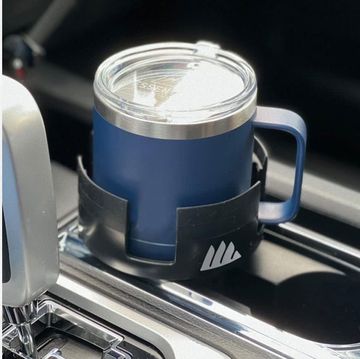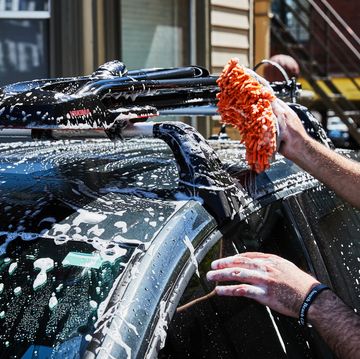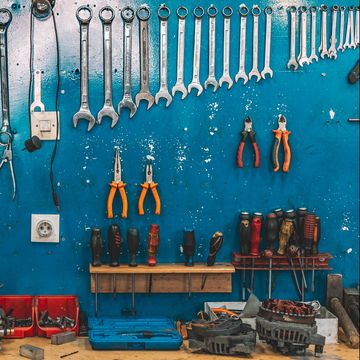Safely handling a tire blowout at highway speed is sort of like going to class as a star athlete at a college-football powerhouse: Do nothing more than sit quietly and you'll probably get a B. Sometimes, the best thing you can do is nothing.
While working for a major tire company, I taught about 1500 drivers how to successfully handle a tire blowout. We affixed plastic explosive to the tire sidewall, which not only blew out the tire but also realistically simulated the petrifying noise of a burst tire. The lesson happened at 60 to 65 mph, with simulated blowouts on the front and rear tires of cars, pickups, minivans, and sport-utility vehicles. I rode in the right seat and pushed a big red button to cause the explosion.
No one lost control. In fact, we were so certain the students would always get a successful result that we didn't permit them to wear helmets, much less did we install roll cages or attach outriggers. My best advice from the passenger's seat: Just keep calm and drive straight down your lane.
To get a B in my class, driving students had to stay away from the brake pedal and allow the drag of the failed tire to slow the vehicle to 30 mph—or slower, ideally—before they even considered turning the steering wheel. But it's easier said than done, especially in the real world where there's no driver instructor to remind you not to panic. Driving straight and not pounding the brake is contrary to almost every driver's natural reaction—to brake hard and head immediately for the false safety of the shoulder.
For a student to get an A, he or she had to do something even more counterintuitive: Press the gas pedal for an instant. The goal is to hit the accelerator just long enough to stabilize the vehicle. Other benefits of pressing the gas for short instant: It prevents the driver from pushing the brake or turning the steering wheel. If the only thing this accomplishes is to lock up the driver's brain while they remember what to do, then I've succeeded as an instructor. By the time the driver remembers what I said, the vehicle will have slowed to a safe speed.
Worried about accelerating with a blown tire? The fact is that the drag of a truly blown tire is so great that even with the throttle held wide open for several seconds, few vehicles will be able to do more than maintain their speed. A short press of the accelerator will not make the vehicle accelerate—that blown tire will make the car feel as if you're dragging a parachute.
If you're in a car equipped with antilock brakes, hitting them might not spell disaster—as long as you keep the steering wheel pointed straight ahead. I'd give my students a C for this action.
The worst thing to do—the thing that earns a failing grade in my book—is giving in to the temptation to jerk the steering wheel before the car has slowed down. Especially if it's a rear tire that has blown out, turning the wheel at high speed creates a high likelihood that the car will spin out. (I know this from first-hand experience: Somebody had to be the driver in those video demos of what not to do.)
One more thing to know: Except for tire nerds, few people think about the difference between a truly blown tire and a tread separation. To regular folks, any failed tire is a "blowout." Yet, a tread separation has more potential for disaster because the flailing tread has the potential to rip into the passenger compartment like a giant, steel-reinforced Weed Eater. Unlike a deflated blowout, a tread separation does not produce drag to naturally slow the car. While the tire's carcass will often hold air for a short period, it offers almost no traction.
A partial tread separation is, I assert, the worst-case situation. A partial separation is when a chuck of tread remains affixed to the tire carcass. If it happens on the rear of a vehicle with a solid rear axle, a common design for pickups and SUVs, both rear tires will bounce uncontrollably. Imagine driving on ice with bald rear tires: It's worse than that. Any movement of the steering wheel will cause the car to spin. When a car spins on a public road, it often leaves the pavement. And when that happens, it often flips over.
Here, our advice not to jerk the wheel becomes even more pressing. If you suffer a failed tire at speed, drive straight down your lane until your vehicle is almost stopped. Then, ever so gently, ease toward the shoulder. A passing grade is within your grasp.













